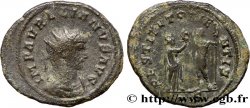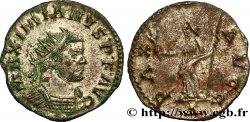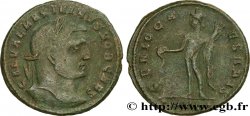v41_0199 - MYSIA – PARION / PARIUM Tétradrachme
MONNAIES 41 (2009)
Starting price : 650.00 €
Estimate : 950.00 €
Realised price : 777.00 €
Number of bids : 3
Maximum bid : 777.00 €
Starting price : 650.00 €
Estimate : 950.00 €
Realised price : 777.00 €
Number of bids : 3
Maximum bid : 777.00 €
Type : Tétradrachme
Date: c. 280 AC.
Mint name / Town : Parium
Metal : silver
Diameter : 28,5 mm
Orientation dies : 12 h.
Weight : 16,95 g.
Rarity : R2
Emission: 1er
Coments on the condition:
Exemplaire de qualité exceptionnelle pour ce type monétaire sur un petit flan, parfaitement centré des deux côtés. Portrait de toute beauté. Revers fantastique où tous les détails sont visibles. Magnifique patine de collection avec des reflets dorés. Conserve l’intégralité de son brillant de frappe et de son coupant d’origine
Catalogue references :
Obverse
Obverse legend : ANÉPIGRAPHE.
Obverse description : Tête imberbe d'Alexandre le Grand sous les traits de Zeus-Ammon, cornu et diadémé à droite.
Reverse
Reverse description : Athéna nicéphore assise à gauche sur un trône, tenant une petite Niké de la main droite qui couronne le nom de Lysimaque et le coude gauche reposant sur un bouclier orné d'un masque de lion ; un monogramme dans le champ à gauche entre le nom du roi et Athéna.
Reverse legend : BASILEWS/ LUSIMACOU/ (PAR)/ (ER), (Bsilews Lusimacou)
Reverse translation : (du roi Lysimaque).
Commentary
Cette combinaison connue de Müller au XIXe siècle n’est pas reprise dans l’article de M. Thompson ce qui semblerait indiquer un monnayage posthume. Avec ce monogramme, plusieurs attributions peuvent être avancées dont Pergame. Nous préférons y voir une monnaie posthume de l’atelier de Parium. Nous n’avons pas noté de liaison de coin pertinente. Nous pensons que ce monnayage pourrait être lui aussi posthume et pourrait constituer une transition avec de nouveaux portraits encore associés à un monogramme lié au monnayage du vivant du diadoque.
This combination known to Müller in the 19th century is not repeated in Mr. Thompson's article, which would seem to indicate a posthumous coinage. With this monogram, several attributions can be put forward, including Pergamum. We prefer to see it as a posthumous coin from the Parium mint. We have not noted any relevant die link. We believe that this coinage could also be posthumous and could constitute a transition with new portraits still associated with a monogram linked to the coinage during the lifetime of the Diadochus
This combination known to Müller in the 19th century is not repeated in Mr. Thompson's article, which would seem to indicate a posthumous coinage. With this monogram, several attributions can be put forward, including Pergamum. We prefer to see it as a posthumous coin from the Parium mint. We have not noted any relevant die link. We believe that this coinage could also be posthumous and could constitute a transition with new portraits still associated with a monogram linked to the coinage during the lifetime of the Diadochus








 Report a mistake
Report a mistake Print the page
Print the page Share my selection
Share my selection Ask a question
Ask a question Consign / sell
Consign / sell










